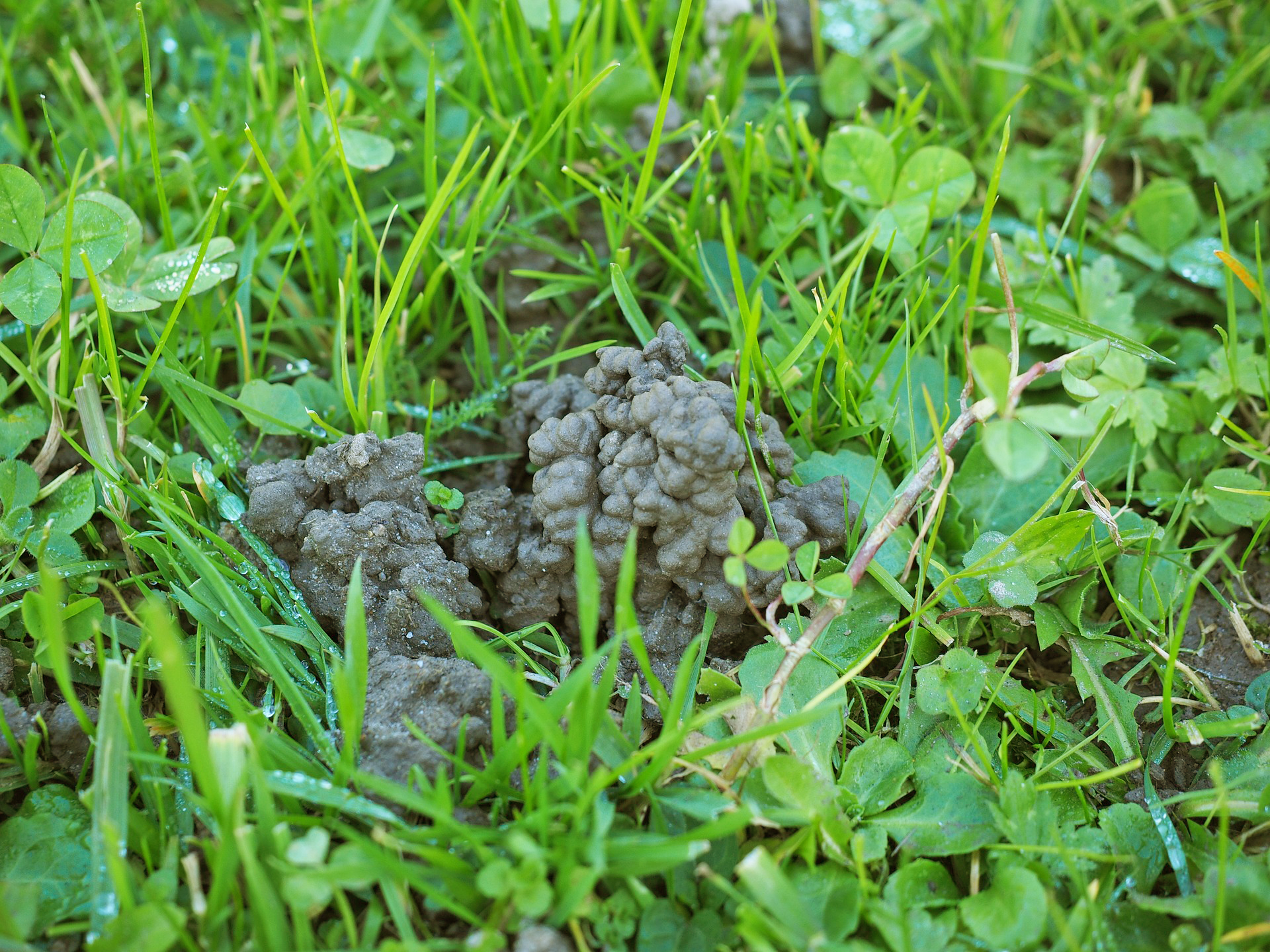Soil Architects
Ingesting, devouring and excreting nothing of use is not unusual. But this is how the humble earthworm builds up soil. Without it, we humans would be left quite literally biting on granite. An ode to a soil creator.
It is blind, mute, deaf, possesses next to no sense of smell, breathes through its skin, is a hermaphrodite and has between five and seven hearts: The common earthworm (Lumbricus terrestris). This inconspicuous animal digs tunnels, pulls decaying plant remains into its burrows, devours them and leaves behind its excrement. Simple activities that significantly enhance soil fertility. A fact that Darwin, whose final book dedicated to the creatures led to him being ridiculed by his contemporaries, was already aware of. The ridicule has now abated and the earthworm has had its position as a "soil architect" restored. And rightfully so: If there are many worms on a pasture, say 400 to 500 per square metre, they can digest up to 10 kilograms of dead plant material per square metre per year, this adds up to between 40 and 100 tons of worm excrement per hectare per year. This means the soil "grows" on low-input pasture by 0.5 cm per year and on meadows by 1.5 cm a year. In order to accomplish this enormous achievement, the invertebrate consumes the equivalent of ten times its own body weight a day and migrates approximately 20 metres a year in its search for food.

Aerator, drainer and water retainer
Using their slime, earthworms mix dead plant material with soil particles and microorganisms to produce stable soil crumbs known as castings. These castings not only absorb water and nutrients much easier, they are also better able to retain them. This prevents erosion. When it rains, the vertical burrows left behind by earthworms also ensure that water drains easier. Drainage happens almost ten times faster in soils where earthworms are present than in soils where they are not. The burrows contribute to good aeration of the soil and promote plant and root growth by enabling roots to colonise the tunnels and absorb nutrients from the castings. And the latter is extremely rich in nutrients: Earthworm castings contain on average five times more nitrogen, seven times more phosphorus and eleven times more potassium than the surrounding soil. Because earthworms can burrow up to six meters deep, these nutrients are deposited throughout the soil – even in the deeper layers – thereby enhancing soil fertility. Also filling the role of a "soil hygienist", Lumbricus terrestris digests large numbers of leaves infested with pests and fungi, thus killing the parasites. It also spreads insect-killing nematodes and fungi, which leads to a better regulation of soil-borne pests.
Let soil rest in spring and autumn
Earthworms are most active in spring and autumn, when it is not too dry and not too cold – exactly then when we humans usually turn to our ploughs and fast-rotating devices. Loss rates of earthworm populations after the use of ploughs are about 25%, and can be as high as 70% after the use of rotary devices. Tillage of dry or cold soil has a much lower negative impact, as the earthworms have retreated to lower soil layers. Because they develop slowly, laying only between eight and twelve cocoons per year, intense soil tillage in spring and autumn has a huge negative impact on their population.

No food, little movement
Earthworm populations are not only reduced by improper tillage. If there is a lack of food, the animals will go elsewhere. So, what do they like? The list of things they eat includes dead roots, leaves, grasses, lightly rotting manure and crop residues. Because earthworms have no teeth, they are unable to eat this "starting material" directly. Come night-time, therefore, they pull it into their burrows where microorganisms process it in such a way that after two to four weeks they are then able ingest it.
Earthworms not only require food but, because they lose up to 20% of their body weight in slime and excretions, the also need moist soil. For this reason, they prefer soils with permanent ground cover, which reduces evaporation and keeps the soil moist. Soils that are worked and compacted by heavy machinery, on the other hand, reduce their activities.
Pesticides also have an impact on the animal's welfare. If they eat plant material that has been treated with pesticides, they do not usually die right out, but the substances do impair the reproduction and growth of earthworms. Herbicides eliminate "weeds", which are important to them as ground cover and food. Mineral and chemical fertilizers also reduce their populations. A long-term study in Switzerland shows that the earthworm population is 40 percent lower where conventional fertilizers are used than where organic fertilizers are used.
Less soil productivity, more flooding
Earthworms are important links in the natural network. Without them, the supply of nutrients to the soil would be limited and aeration would be impaired, which would lead to severe soil compaction. This in turn impairs soil productivity and increases the risk of flooding. So, there are plenty of great reasons to place more value on earthworms and create more habitats for them. All this requires is a conscious decision against the path of least resistance, for example, by refraining from using a rotary tiller.
This is how you can promote earthworms:
- Provide sufficient plant material to earthworms such as green manure, mulch or plant residues.
- Abstain from using pesticides that are harmful to earthworms and other beneficial organisms.
- Use gentle soil cultivation methods such as a digging fork, not a rotary tiller.
- Avoid soil compaction by not using heavy machinery.
- Ensure a continuous supply of organic material to the soil.
- Fertilize organically, for example, with animal excrement or green waste.
Sources: Earthworms - Architects of Fertile Soil, Technical Guide 1610, 2022, FiBL, Research Institute of Organic Agriculture, Frick. Bern University of Teacher Education, Earthworms, Teaching Aid.

